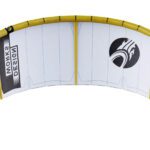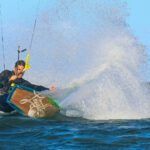
The Seven Best Sunscreens For Kitesurfing 2023
Introduction:
The exhilaration of kitesurfing under the clear blue sky, the wind in your hair, and the sea spray on your skin is hard to beat. But with the thrill of this fantastic water sport comes exposure to the harsh sun. And as every seasoned kitesurfer knows, a great sunscreen is not just an accessory but a necessity.
In 2023, with a plethora of options available, choosing the right sunscreen for kitesurfing can be challenging. This article aims to make your selection easier by narrowing down the top seven sunscreens for kitesurfing this year. From high SPF to water resistance, these products offer a variety of features to protect your skin from harmful UV rays while you enjoy your favorite pastime.
1. Sunscreen X
Sunscreen X tops the list for its high SPF 50+ and four-hour water resistance. The sunscreen is perfect for long kitesurfing sessions, offering broad-spectrum protection against UVA and UVB rays. The product is also eco-friendly, with no harmful chemicals that could harm marine life.

2. Sunscreen Y
Perfect for sensitive skin, Sunscreen Y is hypoallergenic and free from parabens and artificial fragrances. An SPF of 30 offers adequate protection while ensuring your skin is not irritated. The product also boasts a quick-absorb formula that doesn’t leave a greasy residue.
3. Sunscreen Z
Sunscreen Z stands out for its focus on sustainability. This sunscreen is reef-safe, biodegradable, and in a recycled plastic tube. An SPF of 50 offers excellent sun protection while ensuring you are doing your part to protect the environment.
4. Sunscreen A
This sunscreen is ideal for those who prioritize comfort. Sunscreen A is lightweight, non-greasy, and does not leave a white cast after application. It has an SPF of 30 and provides broad-spectrum coverage.
5. Sunscreen B
For dry skin, Sunscreen B offers the added benefit of moisturization. Along with its SPF 50 protection, it contains natural moisturizing ingredients to keep your skin supple and hydrated even in salt water and sun.

6. Sunscreen C
Sunscreen C is a sport-specific product designed with the active kitesurfer in mind. With an SPF of 50, water resistance, and a sweat-proof formula, this sunscreen will stay even during the most strenuous sessions.
7. Sunscreen D
Rounding up the list is Sunscreen D, a budget-friendly option without compromising on protection. It offers broad-spectrum SPF 30 protection, is water-resistant for up to 80 minutes, and is easy to apply.
Conclusion
Kitesurfing is an enjoyable and challenging sport, but protecting your skin from the harsh sun rays is crucial. With the right sunscreen, you can enjoy your time on the water without worry. The seven sunscreens listed above offer a range of options to suit different skin types, preferences, and budgets. Whether you’re a professional kitesurfer or a weekend enthusiast, there’s a product for you.
FAQs
Q: How often should I reapply sunscreen when kitesurfing? A: You should reapply sunscreen every two hours immediately after excessive sweating or toweling off.
Q: Can I use regular sunscreen for kitesurfing? A: While you can use regular sunscreen, it may provide a different level of protection and water resistance than those designed for water sports like kitesurfing. Sunscreens specifically for water sports are usually more resistant to washing off in the water and sweat.
Q: Is a higher SPF always better? A: Higher SPF indicates more protection from UVB rays, but no sunscreen can block 100% of the sun’s rays. An SPF 30 sunscreen blocks nearly 97% of UVB rays, while an SPF 50 sunscreen blocks about 98%. It’s more important to apply an adequate amount and reapply regularly.
Q: What does “broad-spectrum” mean? A: Broad-spectrum sunscreens protect against both UVA and UVB rays. UVA rays can prematurely age your skin, causing wrinkling and age spots, while UVB rays can burn your skin. Too much exposure to either can lead to skin cancer.
Q: What does “reef-safe” mean? A: “Reef-safe” sunscreens are formulated without oxybenzone and octinoxate, two chemicals believed to contribute to coral reef bleaching. Choosing reef-safe sunscreens can help protect our oceans.
Author
Latest entries
 WatersportsSeptember 16, 2024Cabrinha Moto X: Enjoy the Ride
WatersportsSeptember 16, 2024Cabrinha Moto X: Enjoy the Ride WatersportsMay 19, 2024Cabrinha 2024 Moto XL Review: The Ultimate Lightwind Kite
WatersportsMay 19, 2024Cabrinha 2024 Moto XL Review: The Ultimate Lightwind Kite WatersportsDecember 16, 2023Kiteboarding Travel
WatersportsDecember 16, 2023Kiteboarding Travel WatersportsDecember 14, 2023RED BULL KING OF THE AIR 2023
WatersportsDecember 14, 2023RED BULL KING OF THE AIR 2023




